System Service Exception Atikmdag.sys: Quick Fixes
When you get a System Service Exception atikmdag.sys error it leads straight to your PC getting a Blue Screen of Death (BSOD) and rebooting. This error is typically related to graphics drivers or system file issues, but there can be many underlying problems to solve. Here’s how I fixed my own system and all the ways you can quickly fix yours. But firstly, what causes this error?
What causes the System Service Exception Atikmdag.sys error?
An outdated AMD driver and a bunch of corrupt system files were the main problem I faced when getting a System Service Exception Atikmdag.sys error. After doing further research, here’s more about why that happens and other related problems:
- Corrupted System Files: Damaged or missing system files caused by malware, hardware failure, or software conflicts, among other reasons. Running built-in system scans helped me identify and fix these issues.
- Faulty Graphics Card: When trying to run an old, faulty, or incompatible AMD graphics card. Replacing or upgrading your system will fix it.
- Conflicting Applications: Some third-party software like overclocking tools or bad system tuners can interfere with your graphics card and its drivers. Uninstalling these applications may help resolve the issue.
- Windows Updates Gone Wrong: Sometimes, a Windows update may fail to install correctly, contains bugs, or is incompatible with older harder, leading to the atikmdag.sys error. Reinstalling the updates or rolling back can fix this.
- Overheating Issues: I realized that my computer was overheating, and it was causing corruption and other errors, including the atikmdag.sys BSoD. Reapply thermal paste to my heatsink fixed this problem, but you should also check for dust build-up or faulty fans.
- Corrupted Graphics Card Drivers: I found that not just outdated, but corrupted graphics card drivers could also lead to this error. Removing the drivers completely and starting fresh is the best solution.
- Hardware Issues: Problems with other hardware, such as incompatible or failing RAM sticks, can have knock-on effect on your GPU. Running hardware diagnostics can help identify and fix these issues.
How to fix the System Service Exception Atikmdag.sys error
- Update Your Graphics Drivers
- Reinstall Your Graphics Drivers
- Run Windows Update
- Check for Windows Compatibility
- Run the System File Checker
- Check for Hard Drive Errors
- Run DISM
- Perform a Clean Boot
- Test Your RAM
- Restore Your System to a Previous Point
- Disable Antivirus Software Temporarily
- Run a Full Malware Scan
1. Update Your Graphics Drivers
1. Press Win+X and select Device Manager.
2. Expand the Display adapters section, right-click on your graphics card and choose Update driver.
3. Search automatically or select the files manually. You will need to go to the manufacturer’s website to find these.
4. Restart your computer after the update.
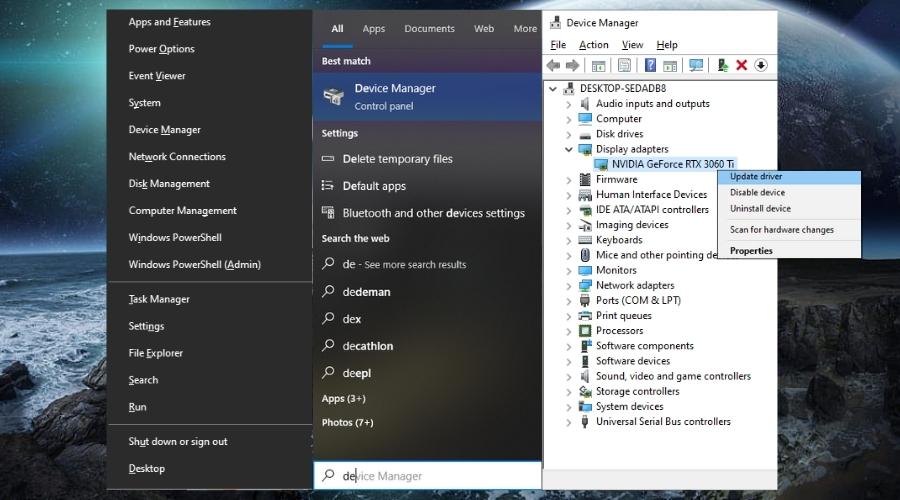
2. Reinstall Your Graphics Drivers
1. Go to the Device Manager, and open the Display adapters tab.
2. Right Click on the GPU driver and press Uninstall driver.
3. Check the box that says Delete the driver software for this device and click Uninstall.
4. Install the latest version or a more stable one and when it is done Restart your device.
3. Run Windows Update
1. Open Settings and go to Update & Security.
2. Click on Check for updates and install any available Windows updates.
3. If prompted, restart your computer to complete the installation of the updates.
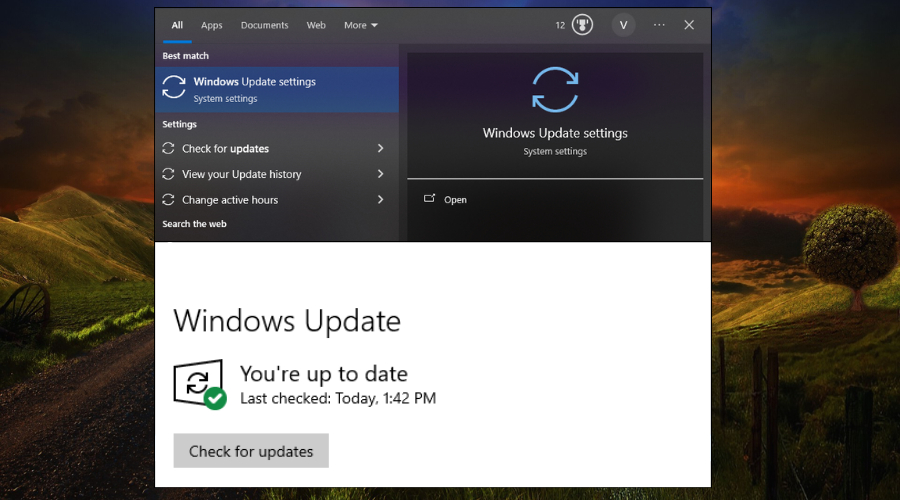
4. Use a third party tool
A great way to ensure that your device works well and to avoid BSOD issues is to get a third-party pc tune-up tool or a repair tool that can do everything you need. Fortect is great for long-term PC maintenance.
1. Install Fortect on your system.
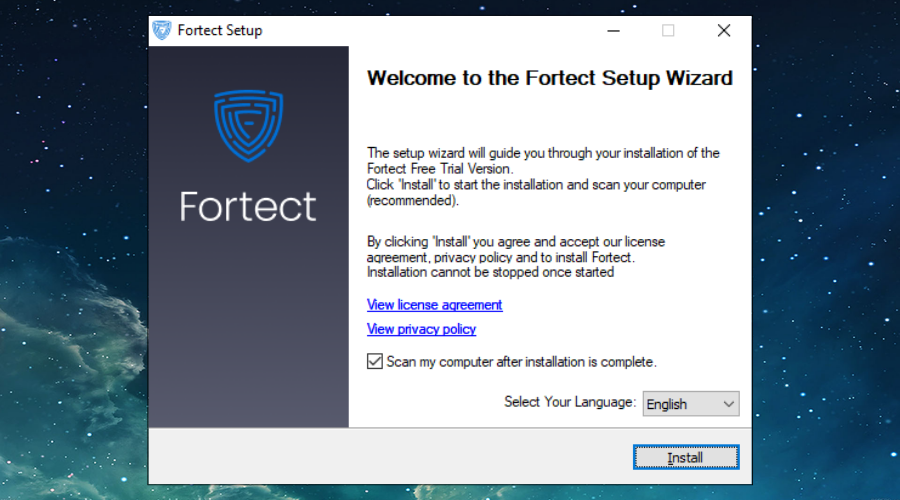
2. Run a full scan.
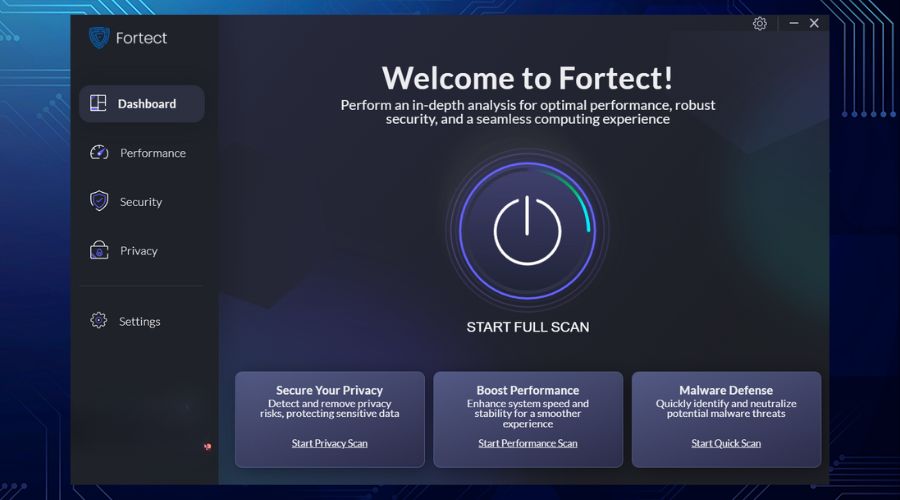
3. Start the repair process.
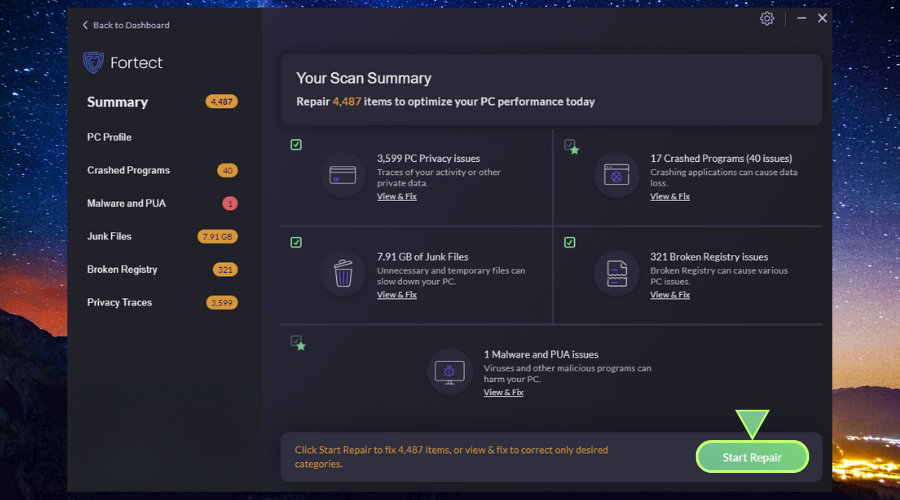
4. Restart your PC.
Fortect will perform a system-wide analysis, checking for issues in the Windows registry, missing DLLs, and other common causes of BSOD. It quickly identifies issues by comparing your system to its database of healthy Windows configurations.
5. Run the System File Checker
1. Open Command Prompt as an administrator.
2. Type sfc /scannow and press Enter.
3. Wait for the scan to complete and follow any prompts to fix issues.
4. Restart your computer.
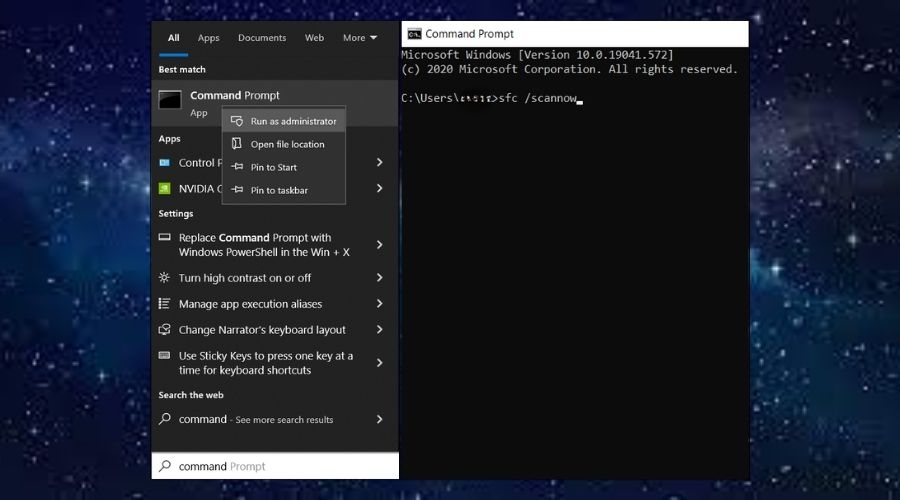
6. Check for Hard Drive Errors
1. Open Command Prompt as an administrator.
2. Type chkdsk /f and press Enter.
3. If prompted, type Y to schedule the disk check, and then restart your computer.
4. Let the tool check and fix any errors, and then restart your computer again if necessary.
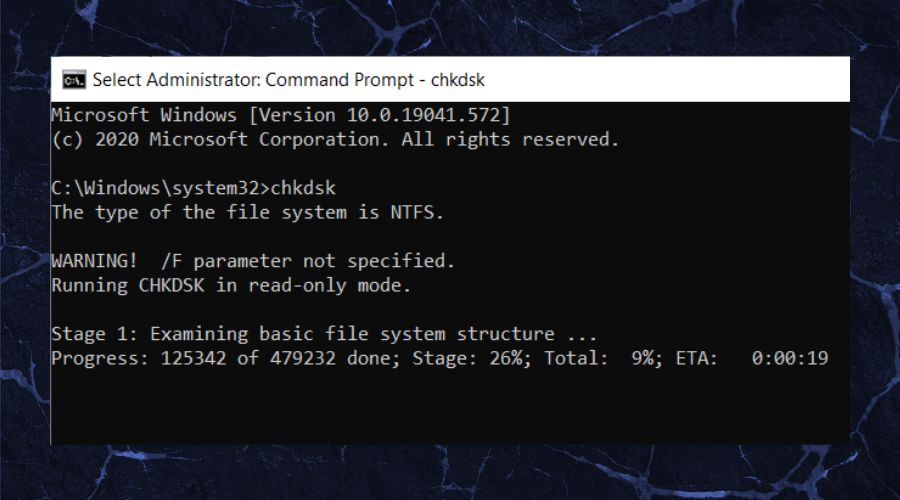
7. Run DISM:
1. Open Command Prompt as an administrator.
2. Type DISM /Online /Cleanup-Image /RestoreHealth and press Enter.
3. Wait for the process to complete then restart your computer.
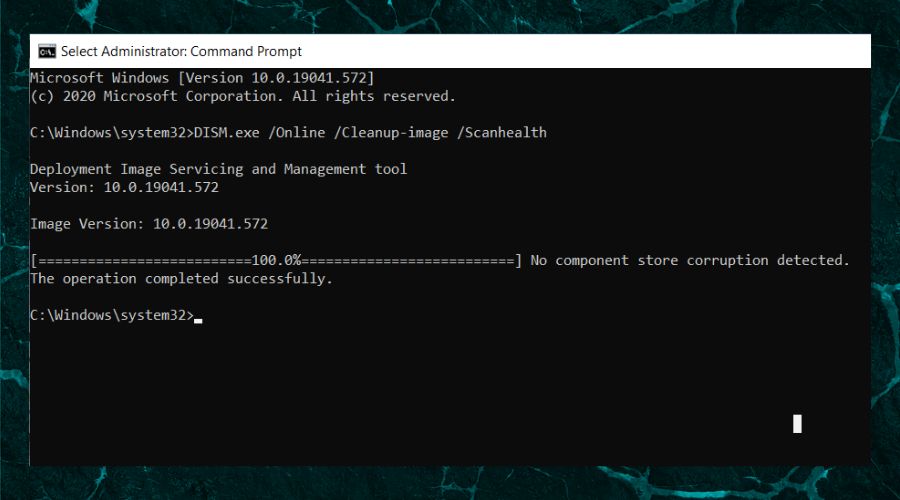
8. Perform a Clean Boot:
1. Type msconfig in the Start menu search bar and press Enter.
2. Go to the Services tab, check Hide all Microsoft services, and click Disable all.
3. Go to the Startup tab, open Task Manager, disable all startup items, and restart your computer.
This will help you determine if a background program is causing the error.
9. Test Your RAM:
1. Type Windows Memory Diagnostic in the Start menu search bar and press Enter.
2. Choose Restart now and check for problems.
3. Let the tool check your RAM and pay attention to the results after the restart.
4. If the tool finds any issues, you might need to replace your RAM.
10. Restore Your System to a Previous Point:
1. Type create a restore point in the Start menu search bar and press Enter.
2. Go to the System Properties tab and click System Restore.
3. Follow the prompts to choose a restore point and start the restoration process.
4. Wait for the process to complete and restart your computer.
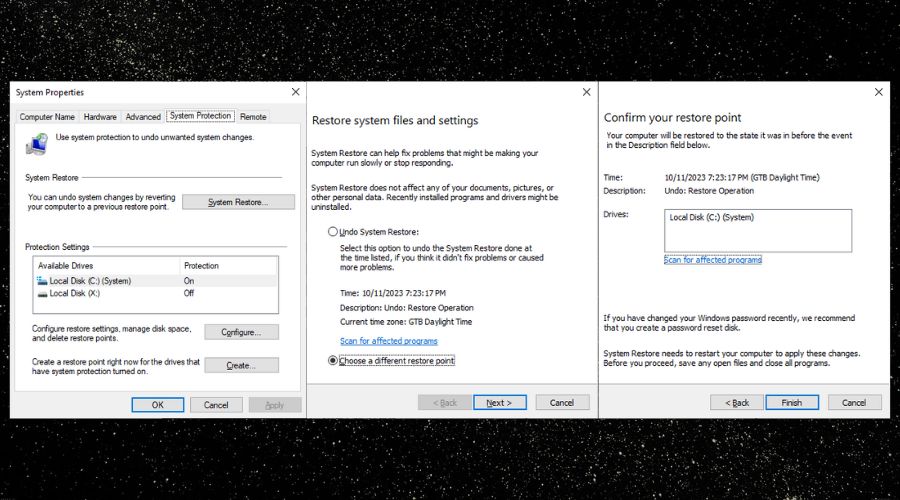
11. Disable Antivirus Software Temporarily:
1. Open your antivirus.
2. Find the option to disable the antivirus protection temporarily.
3. Check if the error persists (remember to re-enable the antivirus afterward).
4. If the error is gone, consider changing the settings on the antivirus software altogether.
12. Run a Full Malware Scan:
1. Open your antivirus software or the Virus & threat protection utility and run a full system scan.
2. Follow any prompts to remove malware.
3. Restart your computer and check if the error persists.
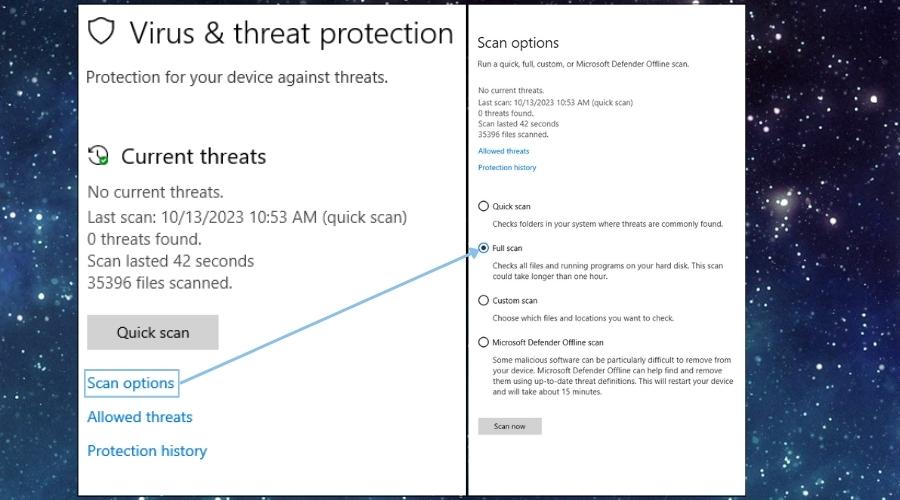
Did you know that your antivirus can delete DLL files?
The System Service Exception atikmdag.sys error can be a bit of a headache, but with the steps we’ve gone through, you’re well-equipped to tackle it head-on. Remember, take it one step at a time, breathe, and you’ll have your computer back in tip-top shape before you know it. Happy computing!




